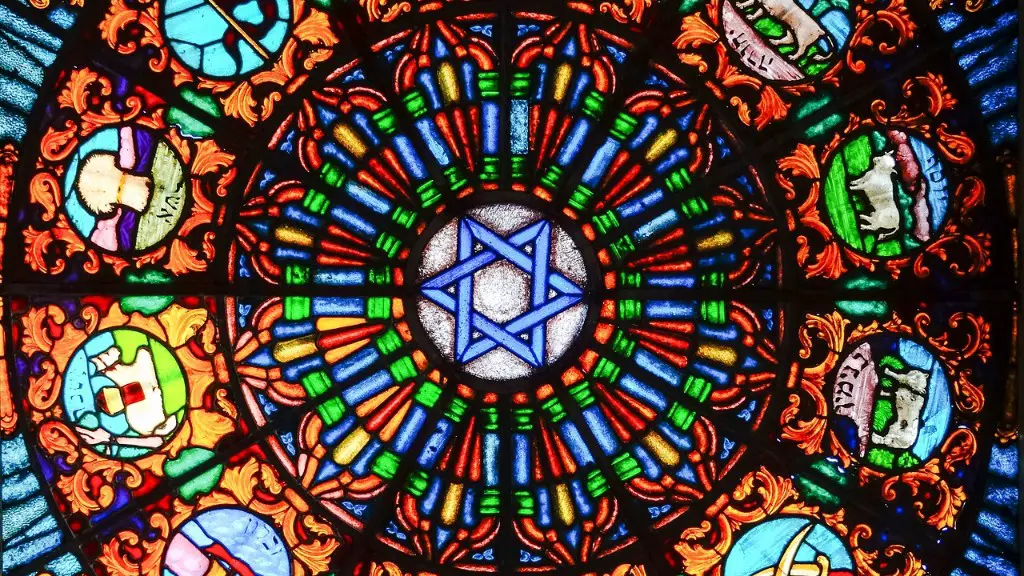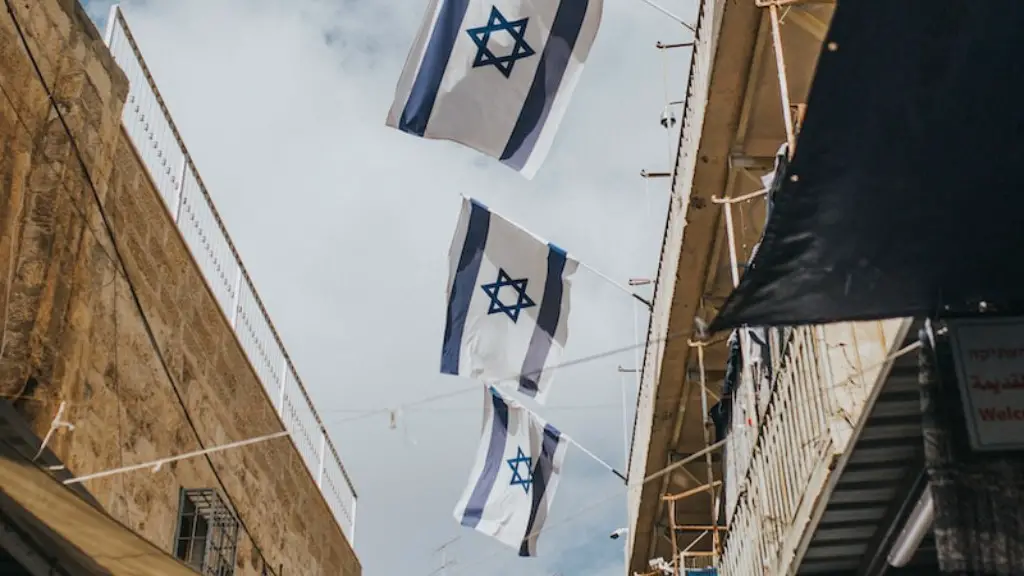Introduction to Major Holidaysfor Judaism
Jewish holidays are celebrated throughout the year, commemorating important milestones in Jewish history. The most significant of these holidays are the High Holidays, which were established during the centuries of the Temple and codified by Maimonides in the 12th century in his Mishneh Torah. These are supplemented by the post-talmudic holidays, which include the Purim, Chanukkah and Tu B’Av. All of these holidays and their customs have become an integral part of Jewish life, with many Jews making an effort to observe all of them.
Major Holidays in Judaism
Rosh Hashanah: Rosh Hashanah marks the Jewish New Year and is celebrated in the fall. It is a two-day holiday and is an important time of reflection and repentance. It marks the start of the High Holidays and is usually observed with a festive meal and special services at the synagogue.
Yom Kippur: Also known as the Day of Atonement, Yom Kippur is the holiest day of the year for Jewish people. It is marked with fasting and services at the synagogue. It is a day of repentance and remembrance of past mistakes, as well as a spiritually uplifting holiday for the future.
Sukkot: Sukkot is a week-long holiday marked with joy and celebration. It is a time to dwell in a Sukkah – a temporary dwelling – and reflect on the past year. The holiday is marked with meals and special services at the synagogue.
Hanukkah: Hanukkah is a eight-day holiday in the winter that celebrates the victory of the Maccabees over the Greeks. During the holiday, families light the Menorah each night and exchange gifts. Families often play dreidel and eat latkes – pancakes made from potatoes – during the holiday.
Purim: Purim is a holiday that commemorates the story of Esther and the Jewish people’s deliverance from the plans of the wicked character, Haman. It is a joyous holiday, marked with a festive meal, reading from the Megillah 10 times, giving tzedakah and exchanging food gifts.
The Significance of the Major Holidays for Judaism
The major holidays of Judaism are a celebration of the unique history and identity of the Jewish people. They are a reminder of the trials and tribulations of our ancestors and a reminder of the ultimate triumph of faith, hope and resilience. The observance of these holidays is also a way of preserving our traditions and keeping our culture alive.
Observance of the Jewish holidays is a means of connecting each generation to its past and to those who have gone before us. Through the observance of the holidays, we honor and remember the ancient ways of our ancestors and pass them down to the next generation. The holidays also remind us of our obligations to each other and to the greater community.
Each holiday has a unique significance and its own rituals, but ultimately, all of the holidays of Judaism are united by a shared set of beliefs and practices. They are a reminder of the special connection between the Jewish people and the Almighty.
Practical Ways of Observing the Major Holidays
Every family has its own way of observing the holidays, but here are some of the main rituals associated with the major Jewish holidays.
On Rosh Hashanah and Yom Kippur, traditional families go to synagogue and attend the prescribed services. Apples and honey are usually eaten to represent a sweet New Year and a shofar is blown throughout the holiday.
At Sukkot, a Sukkah – a temporary dwelling – is constructed and meals are eaten in it. The four species – a bouquet of citrus fruits, palm branches and myrtle, are usually waved in the synagogue, and special meals are celebrated.
During Hanukkah, the Menorah is lit each night in memory of the Maccabees’ victory, and games of dreidel are played. Latkes – pancakes made from potatoes – are traditionally eaten.
On Purim, special gifts are given in the form of baskets of food, and Megillah – the scroll of Esther – is read from in the synagogue.
The Benefits of Celebrating Major Holidays for Judaism
The observance of the major holidays in Judaism has a multitude of benefits. It is a way of strengthening the bonds within the family and community and preserves the traditions of the past. It is also an opportunity to reflect on the values and beliefs of the Jewish people and to appreciate the richness of our culture.
The celebration of these holidays also brings the Jewish people together. It is a time of connection and solidarity, when we can embrace our shared values and celebrate our differences. Moreover, it is an important time of spiritual renewal and reflection, where we can reconnect with the past and look towards the future with hope.
Modern Innovations to Celebrating Major Holidays for Judaism
The traditional ways of observing the Jewish holidays are being complemented by a range of contemporary innovations. For example, many synagogues are now hosting interactive talks, readings and round tables, allowing for a more personal experience of the holidays.
Social media has also become a platform for celebrating the holidays. From virtual Seders and virtual Menorahs to humorous posts about the holidays, it has become an integral part of how we observe the holidays.
In addition to traditional and modern methods of celebrating Jewish holidays, there are numerous opportunities to experience them in a meaningful and engaging way. Jewish Holiday Camps and retreats provide a great opportunity to learn more about the holidays and connect with fellow Jews.
Creative Ways to Experience Major Holidays for Judaism
Creative and inspiring ways to experience the Jewish holidays are now popping up throughout the Jewish world. Young Jews are challenging the traditional structure of the holidays and creating new and exciting experiences.
Online classes combining prayer, study, storytelling and performance have become popular during the holidays. Cultural events such as concerts and theatrical productions have also become a popular way of celebrating. Holidays such as Sukkot and Purim now feature a range of creative activities such as cupcake decorating and puppet shows.
Moreover, creative approaches to teaching about the holidays have emerged, including holiday-inspired art and the use of technology. Hands-on projects such as building a Sukkah, participating in a food drive or hosting a meaningful conversation has become part and parcel of the holidays.
Traveling During Major Holidays for Judaism
Traveling during the major holidays for Judaism is an increasingly popular trend. For example, Hanukkah trips to Israel, Purim breaks to Europe and winter getaways during Sukkot are common among young and old alike.
Travel during the holidays is a way of deepening one’s connection to Jewish heritage and identity. From hiking in the Golan Heights and exploring archaeological sites to connecting with fellow Jews in different cities and countries, traveling during the holidays is a meaningful and rewarding experience.
Making Major Holidays for Judaism Relevant Today
In the age of technology, there are now more ways than ever to bring the holidays to life. Technology and the internet have opened up the possibility of connecting with our ancestors and connecting the past to the present.
Modern technologies such as podcasts, apps and websites have become an integral part of how we observe and experience the holidays. We can now observe the holidays with people all over the world, as well as with our families and friends.
Moreover, new and innovative ways of celebrating the holidays, such as virtual gatherings and interactive activities, are keeping the holidays relevant and engaging. Moreover, by utilizing modern media, we can retell the stories associated with the holidays, making them relevant and accessible to a new generation of Jews.
Engaging Young People With Major Holidays for Judaism
Engaging young people with the major holidays for Judaism is an important part of preserving our culture and traditions.
There are numerous ways to make the holidays more meaningful and relevant to young people, from educational programs to special festivals. Holidays can also be a great source of inspiration for creative projects, from plays and musical performances to art projects and photography competitions.
By using creative and innovative approaches to teaching about the holidays, young people can be inspired to become more open minded, more tolerant, and more engaged in their Jewish identity.
Taking the Major Holidays for Judaism Beyond Ritual
Observing the holidays with focus on the spiritual is an important aspect of Jewish life. Yet, the study of the holidays’ wisdom and ideas can also go beyond ritual.
The holidays provide an opportunity to reflect on our lives, to think about what we can do to make the world a better place and to make meaningful changes in our lives. The study of the holidays’ stories and teachings can empower us to make a difference and inspire us to strive for greatness.
Moreover, the holidays also provide us with a chance to express our gratitude and appreciation for what we have. In a world that is often so focused on material possessions, the holidays are a reminder to be thankful for all of life’s blessings and to strive for a more meaningful and purposeful life.


